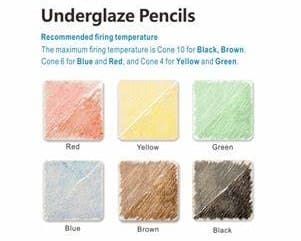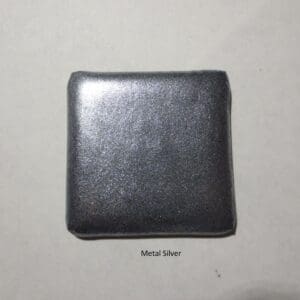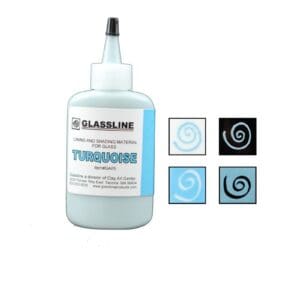Description
Description
Using the Pencil
The pencil requires the friction of a rough surface to make a mark. Think of this as equivalent to “tooth” in paper. You can achieve this surface several ways:
1. Apply powder to sheet glass (or any other form of glass), then tack fuse to around 1275°F–1300°F. After cooling, the surface will have enough tooth to use the pencil.
2. Sandblast prior to using the pencil. The rougher the grit used in the sandblaster, the heavier the tooth will develop.
3. Coldwork the surface with loose grit, diamond handlaps, diamond angle grinder, or anything else that can leave a rough surface.
If extremely precise lines are important, work on the flattest glass surface possible. This may mean you need to flatten sheet glass prior to creating a toothy surface, especially if by tack fusing powder or sandblasting. The smoother surface will make it possible to create a smoother line.
Marks need to be fired to a full fuse or they may rub off. The lines will appear to be a dark grey, like marks made by a soft graphite pencil. Examined closely, they are in fact black but the color and transparency of the base glass dilutes the overall line.
The pencil will look darker fired on white glass than it will on clear or light transparent glass. Repeated application will darken the hue, but it will never be truly black.
Pencil marks on a sandblasted surface can be blended or erased just like a normal pencil before firing. Erasing marks from a highly textured surface may be more difficult and may need to be scrubbed with water.
If you plan to stack multiple layers with marks, they should be prefired individually to at least 1425°F (774°C). If not, you are likely to trap larger bubbles between the layers. Avoid firing the drawing against a primed kilnshelf or ThinFire unless the drawing has already been fused to the glass. This can also caused bubbles in some firings.
Do you plan to sandblast the surface and add more drawings? Protect your initial drawing by sifting a layer of clear/transparent powder over it before firing.
We recommend sharpening the pencil with a craft knife or blade. Do not use a pencil sharpener or an electric sharpener, as these will snap the point off of the lead.
Note: The maximum firing temperature is Cone 10
Safety Warning
Tableware producers must test all finished ware to establish dinnerware status, due to possible variations in firing temperature and contamination.







